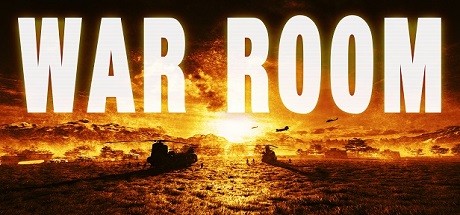A strategy game that doesn’t deliver enough for its price
Type: Singleplayer
Genre: Strategy
Developer: Binge Gaming OU,
Wastelands Interactive
Publisher: Binge Gaming OU
Release Date: 17 Nov, 2020


Overview
War Room is a strategy game where you manage a military campaign in the Middle-East, specifically Afghanistan. During the campaign, you’ll be able to assign troops to different missions and tasks, while also managing its political and social aspects. I’ll say it immediately: despite its full release, War Room is clearly not in a complete state and feels much more like an Early Access title. Why? Let’s see…
Eyes from the Skies
In War Room you’ll spend your time either managing your troops and missions on the world map, or supporting your infantry using UAVs. The latter is done using special support actions that can be called while watching allied and enemy troops from the skies. The UAV optics are very similar to those of other military games (Squad being one of them), so you’ll be able to zoom-in and stabilize the view on your targets, this while being able to use three different cameras, with normal, white-hot and thermal optics. The drone view is hands-down the most well-implemented part of the game, as it really feels you are managing a UAV.
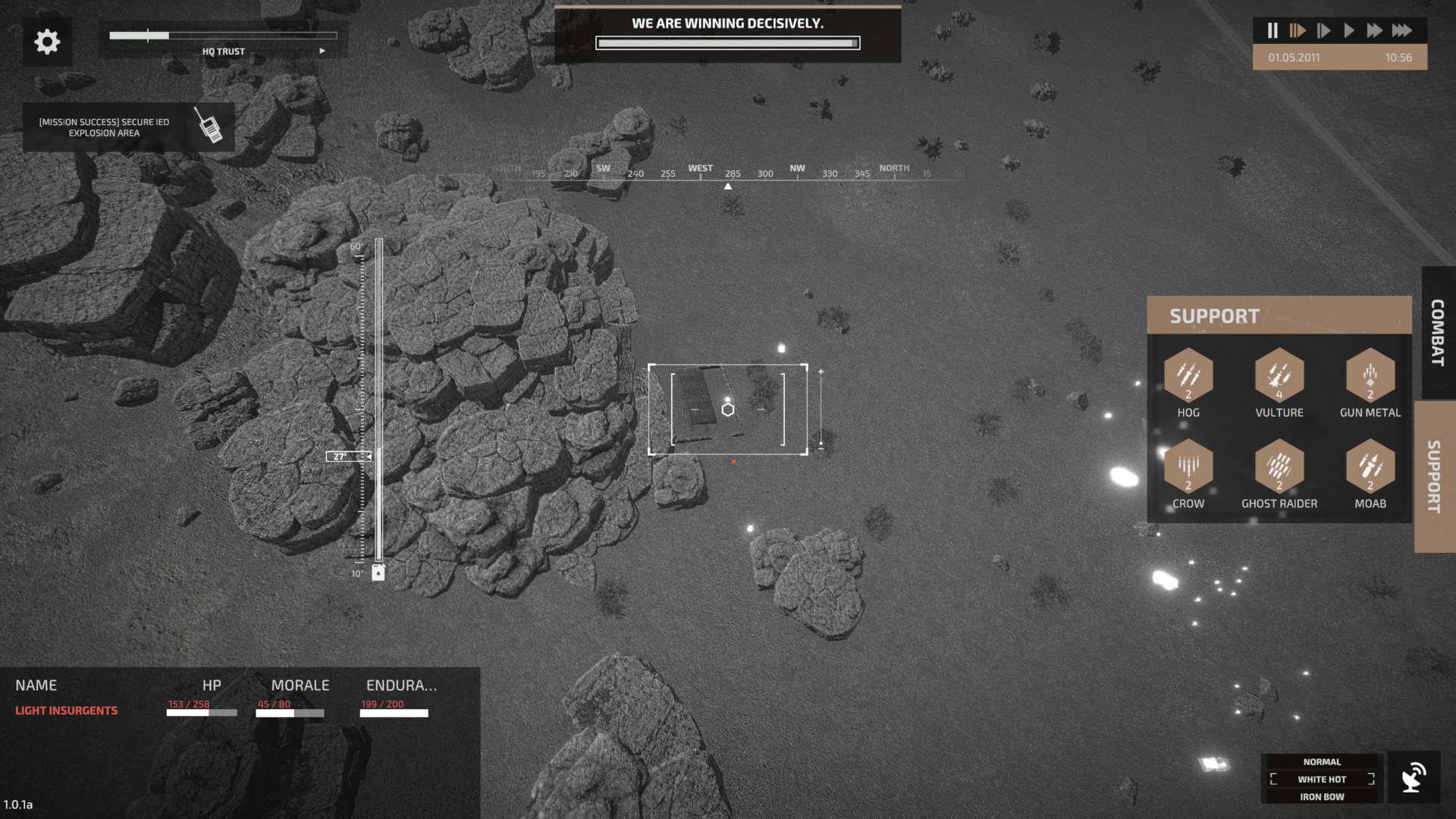
Unfortunately though, the good ends here and what you see through your UAV’s optics is, more often than not, very immersion breaking: infantry animations and AI are in fact poorly implemented, as we’ll see in the next paragraph.
Mother of All Bombs
War Room is sold as a realistic game and, while not certainly not an arcade one, there are many choices in the design of this title that I don’t find realistic. From AI to simple gameplay, there are too many immersion-breaking elements, particularly when in drone view. For example, very often during battles soldiers (both allied and enemies) stand in the middle of nowhere while shooting the enemy: they don’t look for cover or lie down if there’s none. Something similar happens when calling support actions against unsuspecting enemies: even if the attack hits, killing some of the terrorists, the remaining ones don’t seem to be alerted and, on the contrary, continue their routines as nothing happened.
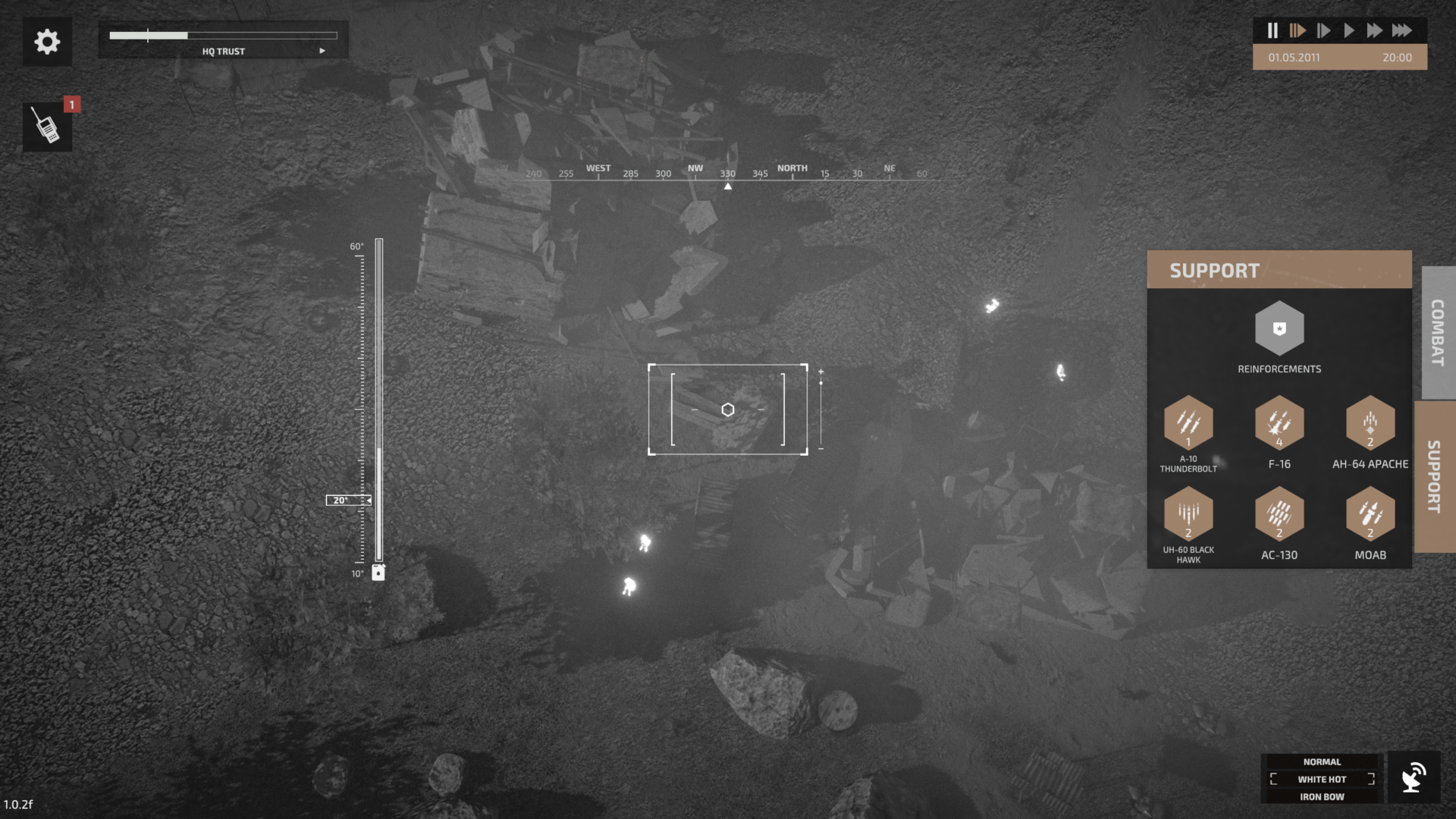
Other immersion-breaking elements are less “technical” and easier to fix: one of these is the presence of MOABs in the game as a support action. Simply put, you can call the Mother Of All Bombs when attacking the terrorists and this will drop a huge bomb with an AoE that doesn’t really do any justice to the real one, which is much, much more powerful. Sure, a real MOAB in this game would be crazy powerful, to the point of being terribly unbalanced, but then why put a MOAB anyway? The bomb could’ve been given another name, possibly of something with less tnt equivalent, and the game would be the literally same, but with one less immersion-breaking element. Also, in history, only one MOAB has been used offensively, so why would the game make me start with two?
UN? More like UX Nightmare!
One of the biggest problems in War Room is navigating its UI. It simply isn’t fluid and simple enough, which is one big problem, since the game plays through a lot of different menus. But, regarding UI, this isn’t even the biggest problem: often buttons and menus don’t behave in the expected way: for example, when supporting your soldiers during a mission, if you click on the wrong support action, you have to cancel it before choosing another one. Not doing this and clicking immediately on the button of the intended support action will call the previously selected one on the location UNDER the button itself. These kinds of UI problems shouldn’t be in an Early Access title, let alone on a fully released game.
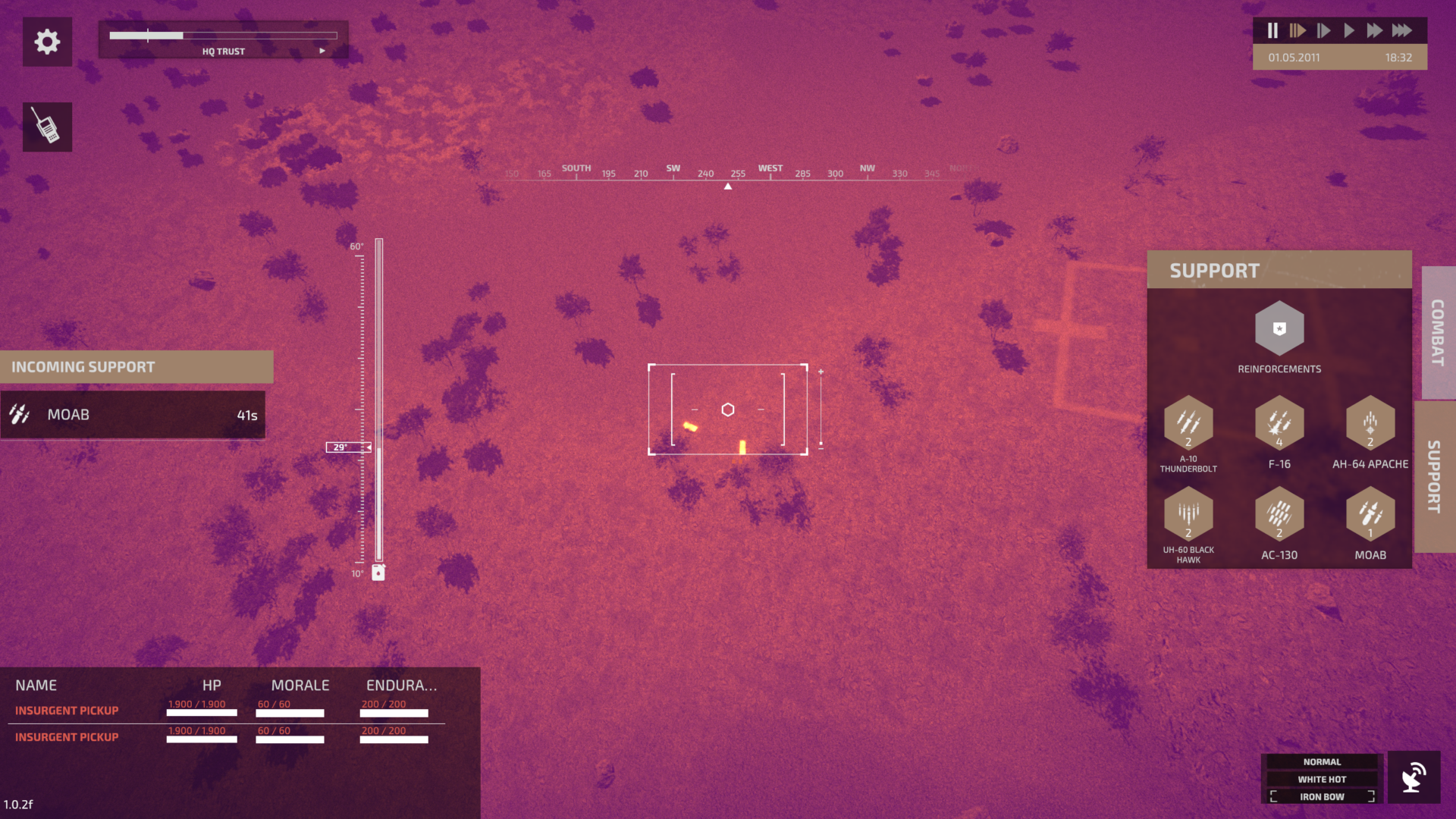
Sometimes it also happens that menus that a long time to load, while sometimes drone feeds don’t load at all, forcing you to restart the game. Some loading times are very long, considering that the game is installed on a nvme SSD, and performances aren’t very stable across the game’s scenarios, with frequents dips below the 40fps threshold even in the (graphically) simple world map.
Winning the Hearts and Minds
When not managing combat missions, you’ll have to set up patrols so secure the territories under your control and help the local villages to gather consensus. Occasionally event missions will also pop-up, sometimes requesting e medevac and sometimes requesting a bomb squad for IEDs. During your non-drone time you’ll also have to manage the HQ-trust, which is a value that measures your performances on the field: successful missions will contribute to a higher trust level, while war crimes, losing soldiers and missions will result in a lower one. Having a low trust value for a long amount of time, or having it reach 0, will result in a lost game. While simple on the paper, this feature of the game has some problems: one of them is that destroying buildings counts as a war crime, but some supports actions, like calling in offensive helicopters, use AI to work. The problem is that these tend to leave scorched earth where they pass, making them unusable if buildings are present in the mission’s map.
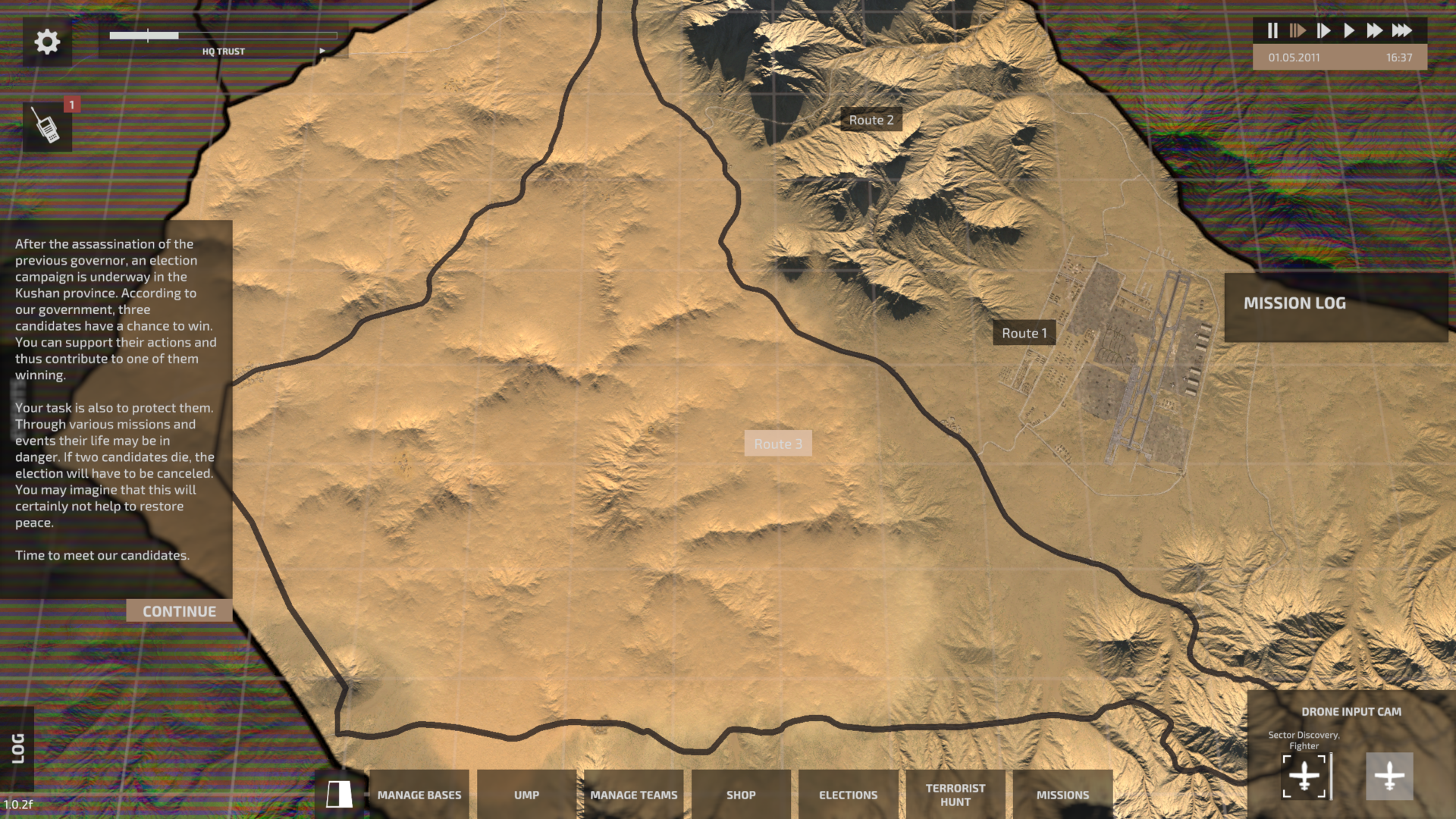
Verdict
War Room is a game sold for a full 24.99€ that I wouldn’t recommend even at half its price. It is a title riddled with bugs, poorly implemented mechanics and immersion-breaking elements. While there are no similar titles on the market (at least that I’m aware of), you should wait at least some months to buy this, even if you’re really interested: it is simply too early for calling this a full release.
Dev Feedback
We appreciate the healthy criticism.
Some of what your review brings up like AI problems are issues we are aware of and continue to develop. We have also decided to give players a higher degree of control over units. This will take away from the original concept a bit but will hopefully solve some issues and lack of replayability players complain about.
In RTS games especially player control usually masks AI imperfections.
It is clear to us that in some gameplay scenarios no matter how long we continue to improve AI it will never exactly resemble human individual or group behavior. Therefore, while we will improve upon what is there already we believe more player control will also help solve a lot of bad impressions and add to the fun element of the game. This is something we plan to add to the game within 2-3 months.
We know User Interface is sometimes a bit overwhelming but we approached this from a staff officer perspective where planning and various kinds of paperwork, is routine tho not very exciting in a game.
It is not easy to squeeze planning documents, execution, intel information and After Action Reports into a clear-cut UI. In battlefield management systems similar mechanics are vastly more complex.
Having said that we accept this may be done better more user-friendly and promise to continue looking for ways to clean up and make UI changes where needed.
Again thank you for your review.
Best regards,
Andrew

